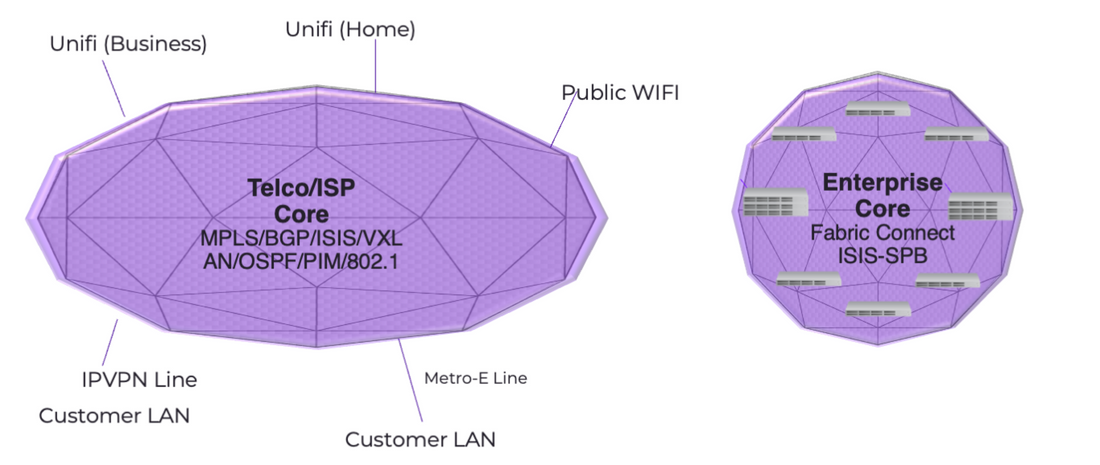Fabric Connect, much like a Telco Service Provider Core, operates with a fundamental principle where the provisioning of the edge network is designed to isolate disruptions occurring at that level. In this scenario, any disruptions or changes happening at the edge network are contained and do not propagate to impact the core infrastructure or affect other edge networks within the system.
This segregation ensures that disturbances or modifications within one specific edge network remain contained within its boundaries. Thus, the core infrastructure remains insulated from these localized issues, preserving stability and preventing the spread of disruptions across the broader network. Additionally, it guarantees that disruptions within one edge network do not adversely affect other edge networks, maintaining a high level of resilience and reliability throughout the overall network structure.
User-centric benefits that stem from Fabric Connect or a Telco Service Provider-like network architecture provide Zero-Tough Provisioning:
Enhanced Reliability: Users experience increased reliability as disruptions or issues in one part of the network (edge) do not impact other areas or the core infrastructure. This ensures consistent access to services without unexpected interruptions.
Improved Performance: With disruptions isolated at the edge level and a robust core infrastructure, users can expect consistent and optimized network performance. This includes faster data transfer, reduced latency, and overall improved service quality.
Seamless Service Access: Users benefit from uninterrupted service access, even in the event of localized disruptions. Fabric Connect's design ensures that services remain available and accessible without being affected by issues occurring at the edge.
Enhanced Security: The network architecture's isolation mechanisms and robust security features safeguard user data and communications. Users can trust that their information is protected against unauthorized access or breaches.
Scalability and Flexibility: As the network scales or adapts to changing demands, users experience minimal impact. Fabric Connect's flexibility allows for seamless expansion without disrupting ongoing services, ensuring users have access to evolving and additional resources as needed.
Consistent User Experience: Users receive a consistent and reliable experience across the network, regardless of the location or the specific edge network they are connected to. This uniformity contributes to a seamless experience for all users accessing the services.
Faster Service Provisioning: The network's agility enables quick provisioning of new services or modifications without affecting existing services. This translates into faster deployment of new features or services for users.
Redundancy and Resilience: Users benefit from a highly resilient network with redundant paths and failover mechanisms. This ensures service continuity and minimal downtime, contributing to an uninterrupted user experience.
In summary, users benefit significantly from a Fabric Connect or Telco Service Provider-like network architecture through increased reliability, improved performance, enhanced security, scalability, and a consistent and seamless service experience across the network.
IEEE 802.1aq is an amendment to the IEEE 802.1Q networking standard which adds support for Shortest Path Bridging (SPB). This technology is intended to simplify the creation and configuration of Ethernetnetworks while enabling multipath routing.[1][2][3]
SPB is designed to replace the older spanning tree protocols: IEEE 802.1D STP, IEEE 802.1w RSTP, and IEEE 802.1s MSTP. These block any redundant paths that can result in a switching loop, whereas SPB allows all paths to be active with multiple equal-cost paths, provides much larger layer-2 topologies,[4]supports faster convergence times, and improves the efficiency by allowing traffic to load share across all paths of a mesh network.[5][6][7][8] It is designed to preserve the plug-and-play nature that established Ethernet as the de facto protocol at layer 2.

